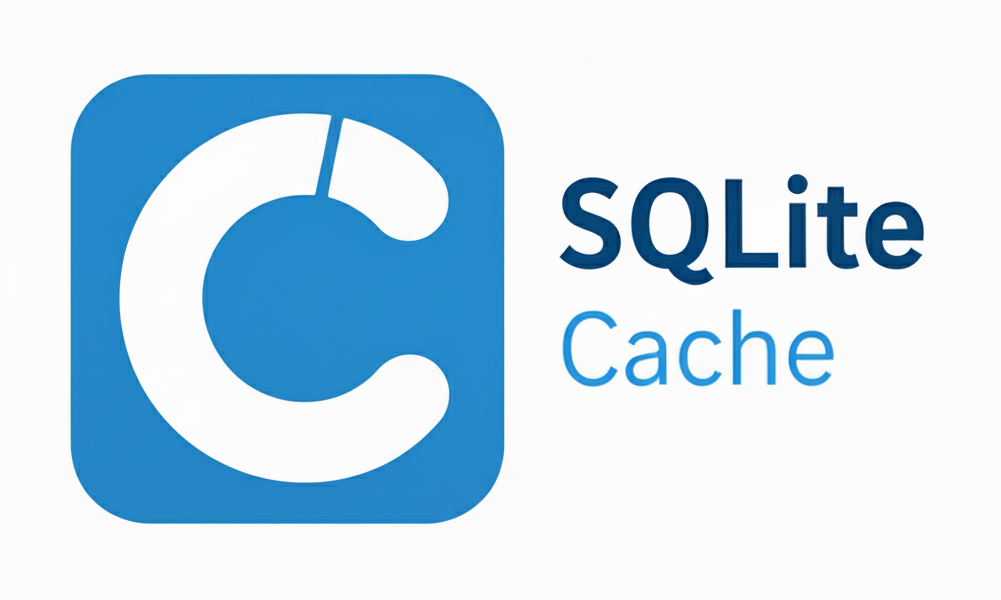
How
This caching library is based on the “Microsoft.Extensions.Caching.Redis” for memory caching, but instead of using Redis it uses the SQLite as a data layer. The ideia is to be a library for persistence cache in case of failures. This library uses the “Microsoft.Data” and acts as a layer above the SQLite.
Usage
The initialization can be either by using Microsoft’s dependency injection or a common initialization.
Common Initialization
var cache = new SQLiteCache(options =>
{
options.Location = @"c:\cache\database.sqlite";
});
Dependency Injection The commom initialization requires to always declare a new SQLiteCache instance and it can be consuming, depending on how many time do you need to cache data. There is why it is available the dependency injection library:
services.AddSQLiteCache(options => {
options.Location = @"c:\cache\database.sqlite";
});
Usage on a class
class AppService
{
private readonly ISQLiteCache _cache;
public AppService(ISQLiteCache cache)
{
cache = _cache;
}
}
Cache Methods available The caching can be recorded/retrieved as a simple string
this.cache.SetAsString("users/1", "jose");
var user = this.cache.GetAsString("users/1");
Or either as a complex object:
this.cache.SetAsObject<User>("users/1", new User() { Name = "Jose" });
var user = this.cache.GetAsObject<User>("users/1");
Cache Methods available The caching can be recorded/retrieved as a simple string
this.cache.SetAsString("users/1", "jose");
var user = this.cache.GetAsString("users/1");
Or either as a complex object:
this.cache.SetAsObject<User>("users/1", new User() { Name = "Jose" });
var user = this.cache.GetAsObject<User>("users/1");
The following list constains all caching methods avaliable currently on the library.
| Method | Description |
|---|---|
| byte[] Get(string key); | Retrieves a cached resource from the database |
| Task<byte[]> GetAsync(string key); | Retrieves a cached resource from the database as async |
| void Set(string key, byte[] value); | Sets a cached resource to the database |
| Task SetAsync(string key, byte[] value); | Sets a cached resource to the database async |
| void Remove(string key); | Removes a cached resource to the database |
| Task RemoveAsync(string key); | Removes a cached resource to the database as async |
| void SetAsString(string key, string value); | Sets an string into the the database |
| void SetAsObject(string key, T value); | Sets an object into the the database |
| string GetAsString(string key); | Retrieves a string from the database |
| T? GetAsObject(string key); | Retrieves an object from the database |
| List GetAsObjectStartsWith(this ISQLiteCache cache, string key) | Get a list of objects when the key starts with something |
| List GetAsStringStartsWith(this ISQLiteCache cache, string key) | Get a list of strings when the key starts with something |
Collections and Indexes
It is now possible to cache objects/strings by using an index, for example, the following code on a newly created database would save the object with the key as being vehicles/1.
cache.SetAsObject(“vehicles|”, new { Name = “bycicle” }) ; Making possible to query more than one object at once, every document on a collection.
cache.GetAsObjectStartsWith<Vehicle>("vehicles");
The following list constains all indexing methods avaliable currently on the library. They can be acessed by the Maintenance property of cache (cache.Maintenance.)
| Method | Description |
|---|---|
| List GetAllIndexes() | Returns all indexes on the database |
| SQLiteCacheIndex? GetIndex(string name) | Returns an index from the database |
| void ClearAllIndexers() | Purge all indexes from the database |
| void ResetIndex(string name, long? value = null) | Reset an index to an specific value |